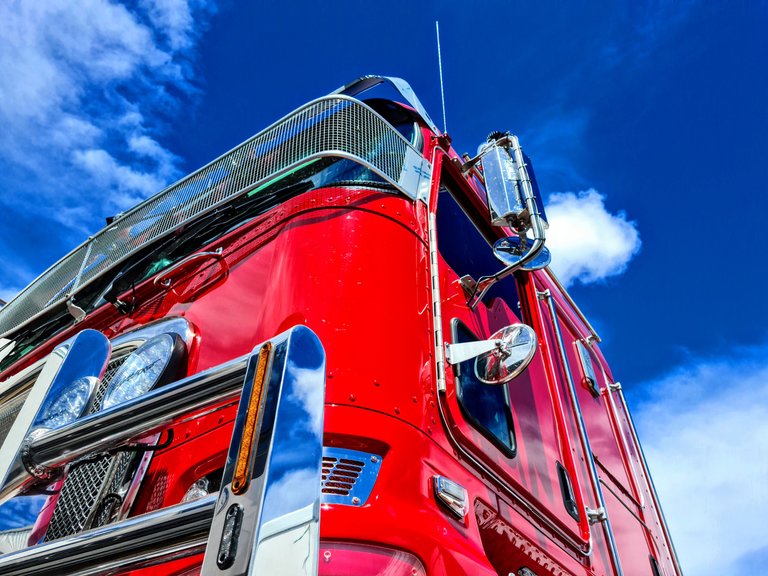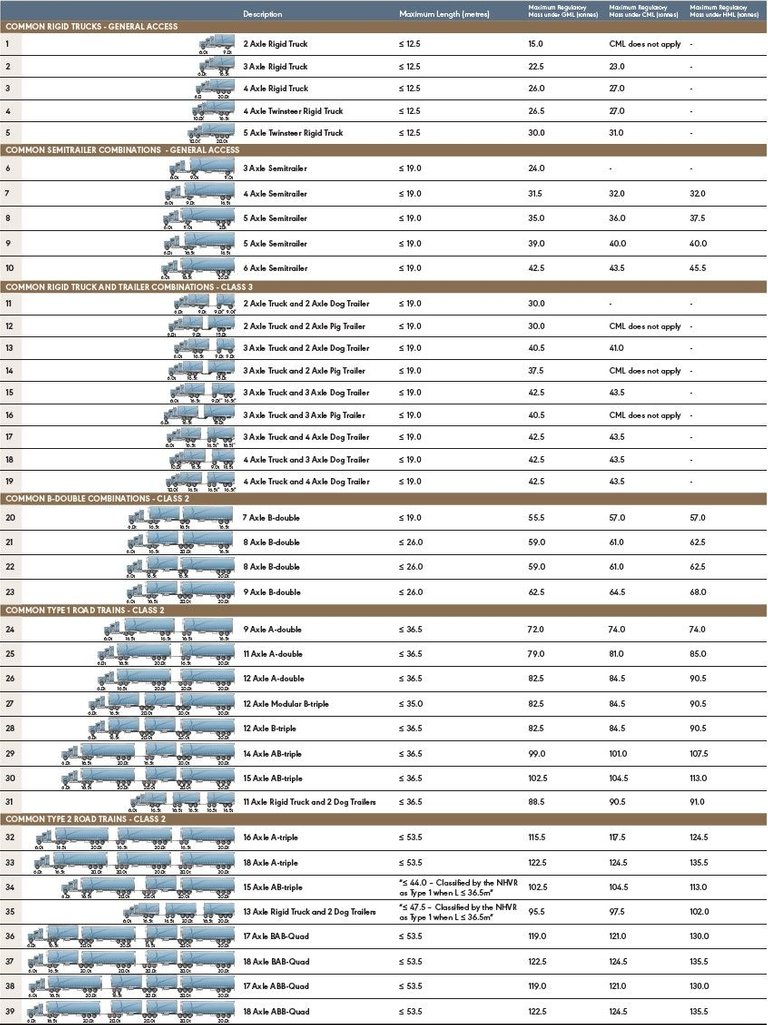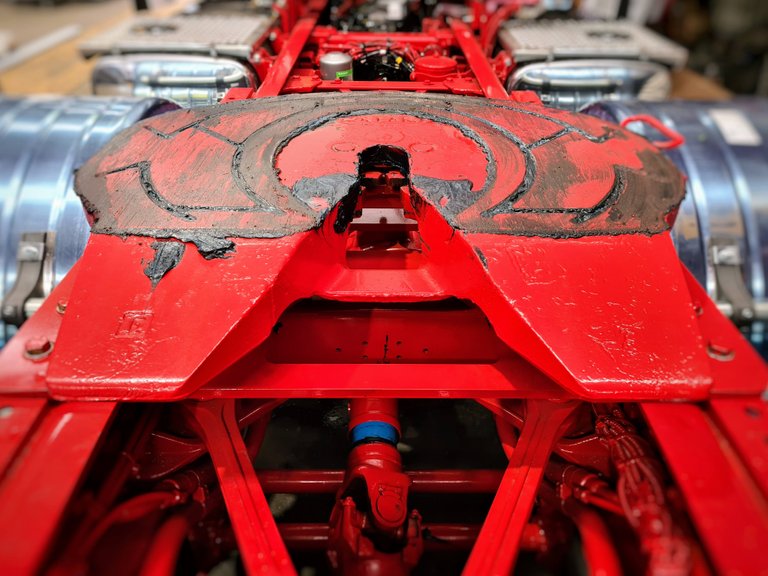
I've never done a job that didn't have its own language, a set of jargon or role-specific words, acronyms and abbreviations that operators would use to expedite processes and make things easier. I say easier for lack of a better word because it's not easier at all for those who don't understand, or remember, the jargon or acronyms For those who do, it helps streamline communications within a business and between businesses and can make things...well, easier I guess.
In trucking, transport, shipping and logistics there are a vast quality of such things some specific to a particular segment and some generic. I mean here, that air freight and sea freight use different terms as does rail, or road transport, but some is common across all. There's acronyms for almost every terminology that encompasses more than one word, and it can drive a person bonkers, but without it conversations and emails would become lengthy and time consuming and in the fast-paced world of transport those two things are not well regarded.
I work at management level in transport here in Australia, a heavy-trucking company, and my company is like the rest; we have a set of company specific terminology and use the standard jargon and acronyms also. I thought I'd share a few of the more basic ones in a post.
Before start, I thought I'd show how complicated it can be with just one element of road transport - The trucks themselves. Some of them anyway.
The chart below is from a government website [NHVR] and relates to road transport and [heavy] truck combinations, which means vehicles over 4.5 tonnes. This is not all of them of course, but you'll get the idea. It outlines maximum vehicle lengths in metres and various mass limits which are stringently policed and enforced. Road transport is a heavily regulated industry with safety of paramount concern so charts like this are critical to assist those who work in it to ensure they comply. Of course, it goes a lot deeper than just a few charts but I want to keep things simple.
Rigid, twin-steer rigid, semi trailer, dog trailer, pig trailer, B-double, A-double, modular B-triple, B-triple, A-triple, AB-triple, rigid + 2 dogs, BAA-quad, ABB-quad...I think you get my point. It goes on and on and those who work in this space need to know what's up and whilst I don't drive these beasts, I need to be across all aspects of transport as I sell it to customers, win the accounts, and that means I need to know everything and far more than a driver might.

The above chart refers to "general access" trucks which are permitted on the roads in Australia, with restrictions and regulations of course. There are other combinations and these are just supplied as a demonstration of the complexity and scope of trucking. Here, you will see all of these trucks moving about in and amongst other vehicles on the road.im src
Anyway, so this post doesn't turn into a million words I'll get into some terminology and [very] brief explanations as an example of some of the acronyms and jargon/terms used.
Some basic terminology and acronyms
Cross docking: Unloading [at a warehouse] from a manufacturer/trucks and reloading into transport for delivery to the customer with no warehousing or time-lag. The goods go from transport inbound to transport outbound "across the loading dock" in a matter of an hour or so, in and out.
GAV: General access vehicle's are heavy trucks that are permitted to run on Australian roads [A big mining dump truck isn't permitted as they are simply too big in width and height.]
3PL: Third party logistics is where a third party handles warehousing and distribution between supplier/manufacturer and end-customer usually on a JIT basis saving the other two parties warehousing space and the costs that go with it like staff, leases, insurances, plant and equipment, facilities maintenance/management and so on.
JIT: Just in time means goods arrive at their end-destination continuously and on demand. Customers [Costco for instance] call up their own product from suppliers or 3PL facilities as they need and delivery slots at their docks are allotted for the trucks to arrive. It saves warehouse space...but can make for service failures also if problems arise. [Shortages like we had in the pandemic situation.]
OSOM: Over-size over-mass relates to a heavy vehicle that is outside of the size and weight capacities of a standard truck and to which transport restrictions are applied such as pilot vehicles, police escort and daytime running only requirements to name a few. Here this often means massive mining equipment and vehicles loaded to trucks, the movement of which can take months to plan.
Pilot vehicle: This could be one or more vehicles that run before, after or both when OSOM's are moving. They provide a visual warning with flashing lights and signs to other road users and herd people out the way, or hold them behind an OSOM.
Dog trailer: This connects to the back of another trailer by way of a drawbar [not a fifth-wheel] and has two axle groups, one forward and one rear.
Pig [or pony] trailer: Connects to the back of another trailer by a drawbar and has a single axle group to the rear of the trailer.
Converter dolly: A pig trailer with a fifth-wheel coupling which will convert a semi-trailer into a dog trailer.
Fifth-wheel: The equipment that permits quick-coupling and articulation between prime mover and trailer, semi-trailer or converter dolly.

Prime mover: A heavy truck designed to haul a semi-trailer or several trailers. You can see one pictured in the main image above.
Road train: A prime mover and trailer combination of at least two trailers and over a certain length in metres.
Semi-trailer: A trailer that has one multiple-axle group [or single axle] to the rear of the trailer. [Some have triple axles.] This trailer allows for the prime mover to support some of the loaded weight up front upon the fifth-wheel.
Two up: A truck with two drivers to share the driving duties allowing the vehicle to run for longer periods without rest breaks - One drives, the other sleeps in the sleeper cab.
BOL: Bill of lading is the contract between carrier and shipper outlining the goods in the consignment, where it was loaded and where it's going - An incredibly important document.
Demurrage: Additional fees incurred if the truck is delayed [through no fault of the trucking company/driver] at the place of loading or unloading. [Say, a forklift breaks down during loading and the truck sits whilst repairs are carried out.] A pre-arranged fee is charged.
FTL and FCL: Full truck load or full container load...This is pretty straight forward.
LCL and LTL: Less than container load, and less than load [for trucking].
POD: Proof of delivery [sometimes just signed paperwork] from the receiver. We do photographic and geo-tagged POD's with signatures on tablets.
RoRo: Roll on roll off refers to cars and other wheeled vehicles that are shipped on the water or dedicated vehicle transport trucks. The roll on, and roll off...usually.
INT: Intermodal refers to standard-sized shipping containers that are used across ocean, road and rail transport - Picked up from one, placed on the other and moved. Their standard size allows them to fit all modes of transport.
HVNL: Heavy vehicle national law [Australia].
Tautliner [sometimes called Curtain-side(r)] A trailer or rigid truck with curtains that run along a rail at the top of the load area to one or both sides - They are drawn open for loading or unloading and are closed and secured to the rope-rail below the bed of the truck before movement. A winch at either end pulls the curtain taut to prevent flapping, hence the name, tautliner. This has been one of the biggest and best changes in transport in a long, long time. [Patented in 1969 - UK] The curtains are often branded with the trucking company's logo or sometimes the customer, depending on the value of the account. [We do both.]
Load restraint curtains: Curtain on a tautliner that incorporates load-restraint devices to prevent loss of cargo should the vehicle tip over.
Pantech [Pan or Pantechnicon]: A truck, [rigid] or trailer that has a hard-sided body with side barn or triple doors, rear barn doors or sliding [upwards] roller door, tilt-down hydraulic tailgates are also widely used. These are usually used for refrigerated transport.
Reefer: A refrigerated unit mounted to a vehicle that is powered by the vehicle's engine (off-engine unit on a rigid truck) or by diesel tanks mounted underneath the trailer on trailers. They are also incorporated into shipping containers to keep food cold or frozen in shipping - These are also diesel units.
GML: General mass limits for the trucks axles. Loads are carefully calculated and distributed when loaded to spread across the vehicle or trailer in the right proportion.
GTM: Gross trailer mass is the weight transmitted to the ground by the axles when the vehicle is loaded. This is important as many roads have weight limits.
GVM: Gross vehicle mass means the maximum weight limit of vehicle and load combined.
ATM: Aggregate trailer mass relates to the maximum weight of a trailer when loaded as specified by the manufacturer.
CoR: Chain of responsibility - The transport sector's equivalent to "duty of care." A legal concept mostly related to safety.
Cold chain logistics: This is the transport of temperature-sensitive foods, beverages, bio's and bio-pharmaceuticals. It refers to the transport and the warehousing elements.
Last mile logistics: A basic term referring to the transportation of goods from the nearest distribution centre/hub to the end-user, a business or home for instance.
SWMS: A safe work method statement is a document created prior to work commencing on high-risk construction sites to ensure work is carried out in accordance with safety guidelines and within tolerance. The SWMS is given to and signed off by the principal-contractor and must be adhered to. Trucking companies are required to do so also, as often we're not just driving to sites, but lifting loads above ground level and precisely placing them...Think, steel girders and beams lifted up for placement.
Dogman [Occasionally spotter is used]: An operator providing precise directions or instructions to a crane operator moving a load above ground or into an area he/she is unable to see properly, or where precision-placement is required. Sometimes [not often these days] the dogman will sit upon the actual load. The term doesn't refer to an animal dog at all, but originates from a "dog" which is a piece of mechanical equipment designed for gripping.
Ok, I could keep going for the rest of the day here as there are hundreds of items I could list...but I don't have the time and I guess you folks are probably not interested. I'd be surprised if anyone got this far.
As you can see, trucking and transport isn't all about swapping cogs on big beastly machines and stopping at truck stops to eat greasy food; it's a convoluted and complex industry that requires a lot of attention, care, due diligence and responsibility. As you can see above, loads can be up to 135.5 tonnes on these general access trucks depicted in the chart above, sometimes more on specialist vehicles. Transport is highly regulated and policed in this country and the repercussions of breaches are brutal to say the least, as they should be.
It's a fast-paced industry and there's little margin for error, some sure, but when things go wrong supply-chains break and that costs a lot of money so...yeah, mistakes, errors and failures are not well-received.
Anyway, that's about it today, a little insight into a few elements of my job, it can be heavy-going, but I enjoy it and for that reason I think I'm pretty good at it. Feel free to comment, ask questions or tell me about the jargon and acronyms that exist in your line of work.
Design and create your ideal life, don't live it by default - Tomorrow isn't promised so be humble and kind
The truck and fifth-wheel image in this post were taken by me.
Several in there I did not know. A few I had forgotten also. The fifth wheel looks like it was hook up tested on a greased trailer (residual grease) but unused as paint still on it.
src img
US specific abbreviation for CORRUPTION = F.M.C $. A. (Dollar sign means they are bought and paid for)
federal motor carrier safety association
In my role I work across various segments of transport so need to have a grasp of most things so that I can sell the concept to customers. Others specialise in a particular area, safety, driving, 3PL, last-mile etcetera, and will probably know it better than I do, more in depth.
Good call on that fifth-wheel, that's exactly what has happened. It's a brand new prime mover. Kenworth K200.
I don't know what the situation is Stateside, but I imagine it to be similar to here.
Also...I heard yesterday, as East-West rail is on the blink (due to flooding) that B-doubles are moving from Sydney and Melbourne to Perth at the cost of $35,000 to the customer. That's huge bro. (Usually about $12,000-$16,000) But, no one can get singles (semi-trailers) now because they're all going for the big bucks to Perth as B-dubs. Bonkers man. It's throwing transport into chaos on the eastern seaboard.
(On the blink: Faulty, broken, kaput, not working.)
It is so Galen one of my younger brothers is a rake in the USA, and he tells me that if the company does not meet delivery times and that depends on them and the weather and so many factors, consequently, it loses customers. In fact, they may lose the trust that customers and end users have placed in them.
There's many variables that can delay transport, but customers don't want to hear any of them; humans seem to have lost their sense of understanding at times I think, although with transport it has more to do with money, and therefore greed, I guess.
The administrative principle is fulfilled, and companies are impersonal (they care very little about the human condition) they are only happy with the cost-benefit and who is at the top having it all .... Elites ... as well as those who manage everything in the world, including social networks.
Do you ever have problems with your rear guard vehicles (are they still pilots?) with people trying to overtake them? I haven't seen it happening myself but have heard that apparently some people are actually that dumb.
Ahh I vaguely recognise some of those terms from when I worked (very) briefly (it was like a 3-4 week temp job filling in for someone that had gone on leave) at a shipping company.
Yeah, it happens still, but passing a pilot vehicle is just bonkers as there's rarely anywhere to go and no way to get past the wide-load. The person is just sort of stuck and then tends to pull over and let the pilot back passed. If there's a police escort the person usually gets fined.
And yes, it's still called a pilot vehicle, I list that in the explanations in this post actually.
You probably did, I'm really tired and coffee tastes weird today x_x
Coffee tastes weird? You might have covid-chan...I heard there's hundreds of cases breaking out again. When I had it my taste went all funny.
Yeh we were joking about how it must be covid (because everything is covid). I have exactly no other symptoms and I have had a similar thing before some years back where I went off meat for six months so it could be that again. Hopefully won't be off coffee for that long XD
Yep, everything is covid.
But, seriously, I hope whatever it is clears up soon.
I'm guessing it was actually the milk after all despite me thinking I'd ruled that out. I went to make my coffee this morning and sniffed the milk and thought it smelled a bit funny (subtle enough that I'm not certain), so I put it back for J to double check later and cracked open a new bottle and all is well with the world.